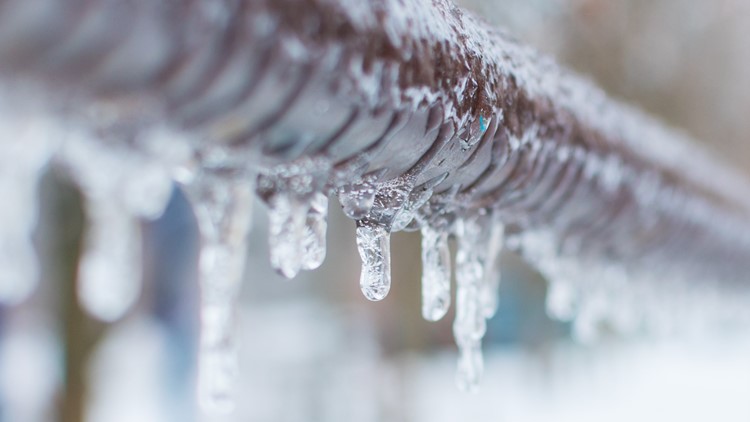Ways to Defend Pipes from Freezing: Professional Advice
Ways to Defend Pipes from Freezing: Professional Advice
Blog Article
The article in the next paragraphs in relation to Prevent Frozen Pipes is immensely informative. Read it yourself and see what you think about it.

Cold weather can damage your pipes, particularly by freezing pipes. Below's exactly how to prevent it from taking place and what to do if it does.
Intro
As temperature levels drop, the threat of frozen pipes boosts, potentially leading to expensive repair services and water damage. Comprehending exactly how to avoid icy pipes is vital for property owners in chilly environments.
Comprehending Icy Pipes
What triggers pipelines to freeze?
Pipelines freeze when exposed to temperature levels listed below 32 ° F (0 ° C) for extended periods. As water inside the pipes ices up, it expands, taxing the pipe wall surfaces and potentially triggering them to rupture.
Dangers and damages
Icy pipelines can result in water supply interruptions, building damages, and expensive repairs. Burst pipes can flooding homes and create extensive structural damages.
Indicators of Frozen Water Lines
Recognizing frozen pipes early can avoid them from breaking.
Exactly how to identify icy pipelines
Search for decreased water circulation from taps, uncommon odors or sounds from pipes, and noticeable frost on subjected pipelines.
Avoidance Tips
Insulating susceptible pipes
Wrap pipelines in insulation sleeves or use warm tape to safeguard them from freezing temperature levels. Focus on pipes in unheated or outside areas of the home.
Home heating strategies
Keep indoor spaces appropriately heated, specifically locations with plumbing. Open cabinet doors to permit cozy air to flow around pipelines under sinks.
Safeguarding Outside Pipes
Yard tubes and exterior faucets
Detach and drain garden hoses prior to winter. Set up frost-proof spigots or cover outdoor taps with insulated caps.
What to Do If Your Pipelines Freeze
Immediate actions to take
If you believe icy pipelines, maintain faucets open to soothe pressure as the ice thaws. Make use of a hairdryer or towels taken in warm water to thaw pipelines slowly.
Long-Term Solutions
Structural changes
Think about rerouting pipes far from outside wall surfaces or unheated locations. Add added insulation to attic rooms, basements, and crawl spaces.
Upgrading insulation
Invest in top quality insulation for pipelines, attics, and wall surfaces. Proper insulation helps keep constant temperatures and reduces the danger of icy pipelines.
Verdict
Preventing icy pipes calls for aggressive procedures and quick reactions. By recognizing the causes, indications, and safety nets, house owners can protect their pipes during cold weather.
5 Ways to Prevent Frozen Pipes
Drain Outdoor Faucets and Disconnect Hoses
First, close the shut-off valve that controls the flow of water in the pipe to your outdoor faucet. Then, head outside to disconnect and drain your hose and open the outdoor faucet to allow the water to completely drain out of the line. Turn off the faucet when done. Finally, head back to the shut-off valve and drain the remaining water inside the pipe into a bucket or container. Additionally, if you have a home irrigation system, you should consider hiring an expert to clear the system of water each year.
Insulate Pipes
One of the best and most cost-effective methods for preventing frozen water pipes is to wrap your pipes with insulation. This is especially important for areas in your home that aren’t exposed to heat, such as an attic. We suggest using foam sleeves, which can typically be found at your local hardware store.
Keep Heat Running at 65
Your pipes are located inside your walls, and the temperature there is much colder than the rest of the house. To prevent your pipes from freezing, The Insurance Information Institute suggests that you keep your home heated to at least 65 degrees, even when traveling. You may want to invest in smart devices that can keep an eye on the temperature in your home while you’re away.
Leave Water Dripping
Moving water — even a small trickle — can prevent ice from forming inside your pipes. When freezing temps are imminent, start a drip of water from all faucets that serve exposed pipes. Leaving a few faucets running will also help relieve pressure inside the pipes and help prevent a rupture if the water inside freezes.
Open Cupboard Doors
Warm your kitchen and bathroom pipes by opening cupboards and vanities. You should also leave your interior doors ajar to help warm air circulate evenly throughout your home.

We hope you enjoyed reading our excerpt on How to Prevent Your Pipes From Freezing. Thanks so much for spending some time to read our article post. Kindly take a moment to promote this blog entry if you enjoyed reading it. We recognize the value of your readership.
Information Here Report this page